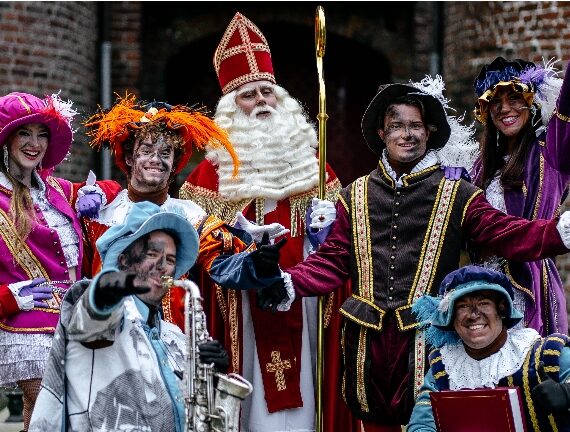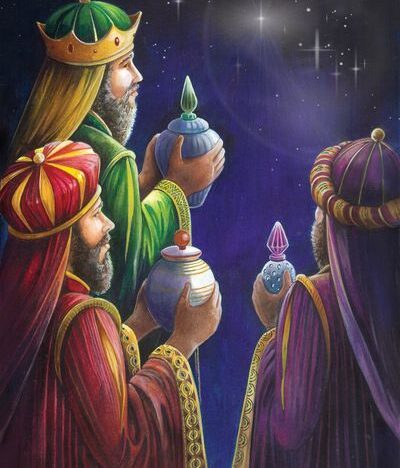This article is also available in: Italiano
Hello Going Expat people,
Let’s welcome December with an article about traditions.
December is a month filled with various gift-giving traditions around the world.
In many cultures, gift-giving is closely tied to religious or festive celebrations:
Of course the first thing we think about December probably is Christmas and therefore Christmas gifts.
In western cultures, Christmas is definitely a major gift-giving occasion. But not the only one. In fact, if we go back in time, before the populare figure of Santa Claus, we find that there were other moments and then other characters who were, and some times still are, supposed to bring the gifts to kids.
In some European countries, particularly in the Netherlands and Belgium, they celebrate St. Nicholas Day (Sinterklass) on December 6th.
The Dutch figure of Sinterklaas is often considered a predecessor to Santa Claus, and his feast day involves gift-giving and the figure of the Pitten, who assist him. Also the tradition requires kids to put a shoe in front of the fireplace (nowadays also just in font of the door) with a carrot in it (for the horse) and a drawing. Among adults who want to celebrate the day, people write funny poems in rhyme to each others.

In some areas of the North of Italy, Santa Lucia is who brings the gifts to the kids on her day celebrated on December 13th. The tradition want that kids leave some mandarins and some other food of their choice on the table and sam straw for the donkey. The Saint will then leave presents to them and they are normally not wrapped in any paper.
Anyways Santa Claus, called there Babbo Natale, remains the main figure who brings gifts in the Country.
Also on January 6th with the Befana, kids in Italy get present. She is a kindly old witch who fly around on her broom the eve of Epiphany.
January 6th is also the day of the Three Wise Men or Kings. In some Latin American countries and Spain, children receive gifts from the Three Wise Men (Los Reyes Magos) on this day.

In the United Kingdom, Father Christmas is the gift-bringer. Like Santa Claus, Father Christmas is often depicted as a jolly, bearded man in a red suit. Father Christmas has roots in medieval England and was associated with the Christmas season.
In Russian tradition, Ded Moroz, accompanied by his granddaughter Snegurochka, brings gifts to children on New Year’s Eve. This is part of the celebration of the New Year in Russia.
In German-speaking regions, such as Germany and Austria, the Kris Kringle (Christkind), a golden-haired angelic figure, is often associated with gift-giving during the Christmas season.
In French tradition, Père Noël is the gift-bringer during the Christmas season. The character is similar to Santa Claus and is associated with the exchange of gifts on Christmas Eve.
In Scandinavian folklore, the Tomte (Sweden) or Nisse (Norway and Denmark) is a mythical creature associated with the winter solstice and gift-giving. The Tomte is often depicted as a small, bearded figure.
How and when Santa Claus became so famous then?
The modern image of Santa Claus has evolved over centuries, with various influences contributing to the character we know today. The figure of Santa Claus has roots in both Christian traditions and folklore.
The name “Santa Claus” is derived from the Dutch “Sinterklaas,” Saint Nicholas was a Christian bishop who lived in the 4th century in the area that is now Turkey. He was known for his generosity and became the patron saint of children.
The transformation of Saint Nicholas into the gift-bringing figure associated with Christmas began to take shape in the United States in the 18th and 19th centuries. Influences came from Dutch and German settlers who brought their Sinterklaas traditions with them.
The iconic image of Santa Claus as we know it today, with the red suit, white beard, and jolly demeanor, was popularized in the 19th century, particularly through the influence of the poem “A Visit from St. Nicholas” (commonly known as “The Night Before Christmas”), attributed to Clement Clarke Moore.
The illustrator Thomas Nast also played a significant role in shaping the modern image of Santa Claus. In the late 19th century, Nast’s illustrations for Harper’s Weekly depicted Santa as a plump, bearded man in a red suit with a workshop at the North Pole.
The Coca-Cola Company further contributed to the popularization of the modern Santa Claus in the 20th century through its advertising campaigns. The company’s depiction of Santa in red and white, created by Haddon Sundblom, became widely recognized and reinforced the image of Santa Claus that is now pervasive during the Christmas season.

So, while the roots of Santa Claus go back centuries to the figure of Saint Nicholas, the modern, widely recognized image of Santa Claus developed and solidified in the 19th and 20th centuries through a combination of literature, art, and popular culture.
Other festivities and gift-days around the world:
Kwanzaa, an African-American and Pan-African holiday, involves the exchange of symbolic gifts, such as handmade items, books, or educational materials, to emphasize creativity and self-determination.
In India, during the festival of Diwali, it’s common to exchange gifts as a way of expressing love and affection. Sweets, dry fruits, and decorative items are popular choices.
During the Jewish festival of Hanukkah, it is customary to exchange gifts, especially among family members. Children often receive small gifts on each of the eight nights of Hanukkah.
In Japan, it’s a tradition to exchange gifts, known as Oseibo, at the end of the year as a way of expressing gratitude. Common gifts include food, alcohol, and other thoughtful items.
Although not in December I also want to talk about the exchange of gifts according to the Islamic tradition. There are 2 festivities to celebrate that also include gifts: Eid al-Fitr (end of Ramadan) and Eid al-Adha (celebration of sacrifice) which coincides with the end of Hajj, that is, the pilgrimage to Mecca. Gifts are mostly for children in the family and they wear their new clothes brought for the occasion. Adults make donations to those who cannot afford to buy/have new clothes.
We conclude, and again not in December, with the Chinese tradition of hongbao, which marks the New Year for this culture. It is normal to exchange envelopes for money as a symbol of luck and prosperity.
What other gift-bringer and celebrations do you know around this period of the year?
Let me know in the comment and keep on reading the blog for more curiosity around the world
Thank you and happy December
Do you want to support the blog and what I do with Going Expat?
Then you can buy me a coffee
Rossella






